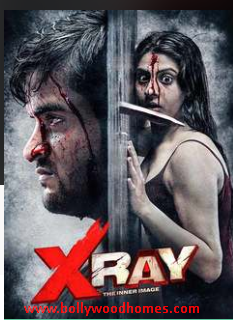American Symphony Director Jon Batiste explains the making of the film – The Hollywood Reporter

John Batiste in the American Symphony
Courtesy of Netflix
When director Matthew Heineman and musician Jon Batiste began their second collaboration after that First wave — a harrowing documentary in which Heinemann installed himself in a New York hospital during the early days of the Covid pandemic, and for which Batiste provided the score — was a much less risky project than its predecessor.
Jon Batiste (left) and Matthew Heineman, whose film American Symphony was shortlisted in three Oscar categories.
Emma McIntyre/Getty Images
American Symphony Follows the previous Late Show with Stephen Colbert Career band leader: Earned a whopping 11 Grammy nominations for his 2021 album we (which won Album of the Year and four other awards in April 2022) and is preparing for a one-night performance of the honorary opus at Carnegie Hall. Batiste, by all accounts, was on top of the world.
But on a personal level, things were more complicated. His partner, writer and musician Silika Jawad, had a rare form of cancer, which returned after being cured almost a decade ago. Suddenly, the film became as much about Batiste and Jawad’s shared battle against the odds as it was about Batiste’s professional success.
The director and musician spoke with THR About their collaboration on the Netflix film, which earned spots on three Academy Award shortlists: for Best Documentary Feature, Original Score and Original Song for “It Never Went Away” by Batiste and Dan Wilson.
What’s been the biggest surprise about people’s response to the film?
Matthew Heineman: Our intention in making this film was that we didn’t want everyone to come to the same conclusion. The reactions in the past two months have proven this to be true. At a time when our world is so complicated — and many of us are experiencing some version of an existential crisis — what’s beautiful about the film is the way John and Sulika confront adversity. It’s a beautiful road map for all of us.
Jon Batiste: I feel like it’s theirs: now the movie is available to everyone in the world. This is art – when you create a piece of art, whether it is a book, a painting or a symphony, it becomes the property of the public, it becomes part of the collective memory. And the way it was put together – all the incredible vision it took to put it together as a piece of art – is what’s most moving. I’m happy that millions of people have responded to it. Because I lived it, it’s hard for me to watch it at this point.
When did it occur to you that when you told your story you would give up part of it?
Batiste When we started this, it was three friends creating and discussing things, really committed to doing something honest and real and vulnerable and real – all values we all share. That was before Netflix came on board, broadcast this movie to the whole world, and signed on the Obamas to be (producers). It was our world and we really pushed ourselves in our own fields (as artists). This was the best case scenario, because I don’t know if I would have been able to give up so much if I knew where we would end up.
Heineman Everything seems inevitable in the movie now. But for the vast majority of those who make them, there are a lot of question marks. Will Sulekha be a part of the film? Will you survive? Will John be able to perform the symphony? How do we get our financing for the film? In front of and behind the camera, (there were) a lot of unknowns until we premiered it in Telluride.
What was it like to compose the soundtrack for a film of which you are also the subject?
I had to live Batiste while filming first, then take what happened in the life captured and discover the thematic resonance of the symphony. You’ll hear the themes that were in the symphony become themes in the score and then come together in the song at the end of the film. Everything flows in and out of each other, which is very difficult, to blend compositional music with song-based music. All the things we drew from to make the symphony went into the score and are also an integral part of the symphony. It was like art imitating life, which imitates art imitating life.
Heineman Although I can’t write music or talk about chord progressions, I have a good ear for music. Obviously, this is John’s world and John’s palette. For a movie that we shot for 1,500 hours, we probably had about 300 hours of John jamming and rehearsing and performing in different ways. The soundscape was really something I wanted to match the energy, and it was fun to editorially start in a poetic moment and then have this piece of music take us to another place or another world. There’s a song that John wrote, or actually improvised, while performing at Carnegie Hall. I’ve probably listened to that song 400 times; It became the national anthem of the film industry. It’s kind of like the whole process of making this movie. We’re constantly in dialogue in a way that I’ve never been with the people I’ve photographed with.
This story first appeared in the January standalone issue of The Hollywood Reporter magazine. Click here to subscribe.



